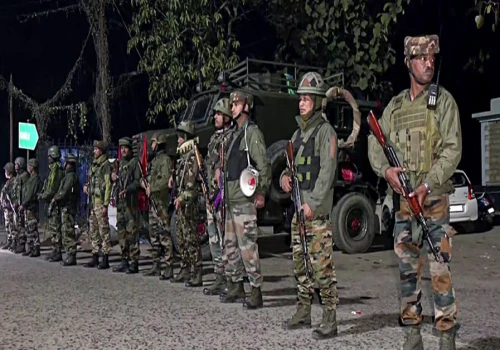
On Thursday, the Union Cabinet, led by Prime Minister Narendra Modi, approved the "One Nation, One Election" bill. The government plans to introduce a detailed bill during the ongoing Winter Session of Parliament to push forward this major reform.
What is 'One Nation, One Election'?
The "One Nation, One Election" idea aims to hold elections for the Lok Sabha (India's Parliament) and State Assemblies at the same time across the entire country. Prime Minister Modi has long been a strong supporter of this idea, believing that it will streamline the election process and lead to several benefits.
Current Election System
At present, elections for the Lok Sabha and the various State Assemblies are held separately. These elections usually happen either after the completion of a five-year term or when a government is dissolved for reasons like a loss of majority or political instability.
Benefits of Holding Simultaneous Elections
Supporters of the "One Nation, One Election" plan argue that holding joint elections can bring about multiple advantages. One of the major benefits is the potential for significant savings in election-related costs. Reports indicate that around Rs 60,000 crore was spent during the 2019 Lok Sabha elections alone. This includes costs for political parties, the Election Commission of India, and the deployment of security forces. The need for repeated security personnel deployments and the additional duties on government machinery during elections also lead to lost productivity and financial costs. By holding elections together, these costs could be reduced. Additionally, supporters believe that holding elections together could improve administrative efficiency and lead to better voter turnout, as people would vote for both national and state leaders at the same time.
History of Simultaneous Elections
The concept of holding simultaneous elections in India dates to the country's first general elections in 1951-52. Back then, elections for the Lok Sabha and the State Assemblies were held together. This practice continued until 1967 when several state assemblies were dissolved early, leading to a disruption of the simultaneous election cycle. Over the years, various elections were held separately due to political issues, making it difficult to maintain the system.
Arguments For and Against Simultaneous Elections
There are both supporters and critics of the "One Nation, One Election" plan. Supporters argue that holding elections for the Lok Sabha and state assemblies at the same time would help save state resources. It would also prevent political parties from staying in election mode all the time, which could reduce the chances of corruption linked to the election process. On the other hand, critics express concerns about the potential misuse of power by the central government, which could influence regional parties and state-level politics. They also worry that national issues might overshadow local concerns during elections, weakening local democracy.
Challenges to Implementing 'One Nation, One Election'
Despite the potential benefits, implementing this idea faces significant challenges. First, it would require amendments to the Indian Constitution. This includes changes to key articles, such as 83, 85(2)(B), and 174(2)(B), along with the Representation of People's Act, 1951. These amendments would need a two-thirds majority in Parliament, and the approval of at least half of India’s states. Furthermore, the logistical challenge of ensuring enough electronic voting machines (EVMs), polling stations, and security personnel for such large-scale elections would add complexity to the process.

_500_x_350.webp)
 (1)_500_x_350.webp)







